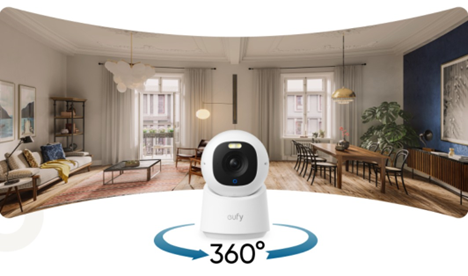How to Improve Wi-Fi for Wireless Security Cameras?
Wireless security cameras require steady Wi-Fi to provide smooth video feeds and real-time warnings. Weak signals or poor connectivity might result in delays, distorted visuals, or even complete disconnections, decreasing the usefulness of your system. Many homeowners experience buffering or lost connections, but these difficulties are generally caused by simple things in the home network. You can greatly improve camera dependability by understanding what influences Wi-Fi performance and implementing tried-and-tested solutions. A well-optimized network guarantees that your cameras collect and broadcast important footage without interruption, giving you confidence in the protection of your property at all times.

What Affects Wi-Fi Performance for Security Cameras?
Wi-Fi Range and Interference
Wireless cameras require a clear connection to communicate with your router. When the camera is too far away from the router, the Wi-Fi connection becomes weak and inconsistent. Walls, floors, and home items such as furniture can all interfere with or reduce signal reception. Other devices, such as microwaves, cordless phones, or Bluetooth speakers, might potentially cause interference and disturb the connection. Even adjacent Wi-Fi networks might overlap channels, resulting in dropouts. These variables combine to degrade video quality or cause buffering. Keeping cameras inside the effective Wi-Fi range and limiting interference sources make a significant difference in sustaining strong and stable connections.
Bandwidth and Speed Limitations
Each connected gadget in your home competes for bandwidth. When numerous devices are streaming, downloading, or gaming simultaneously, your wireless cameras may fail to transfer footage in real time. High-definition cameras need large upload speeds, which many internet plans fail to provide regularly. A low bandwidth connection causes choppy video, sluggish alerts, and incomplete footage. Furthermore, even if your internet package allows for appropriate bandwidth, outdated routers may struggle to manage several devices smoothly. Understanding your network's capacity and managing device use is critical. Ensuring that your cameras have sufficient upload speed reduces interruptions and improves overall video quality.
Router Placement and Configuration
The placement and configuration of your router have a significant impact on Wi-Fi performance. Placing it in a corner or behind heavy walls limits coverage, leaving cameras with poor signals. Routers should be centrally located and raised to ensure that the signal is equally distributed. Configuration is also important—using obsolete settings, default channels, or lower frequency bands might result in congestion and delayed connections. Switching between the 2.4 GHz and 5 GHz bands may increase performance depending on the camera position. Regularly upgrading router firmware ensures that your network is secure and effective. A well-placed and correctly configured router guarantees that your cameras have constant and dependable communication.

Tips to Improve Wi-Fi Connectivity for Security Cameras
Positioning Your Router for Optimal Coverage
Placing your router in the correct place ensures that your cameras receive strong, consistent signals. Place it in a central, open part of your home rather than a cupboard or basement. Elevating the router on a shelf or wall mount allows the signal to spread more efficiently. Avoid positioning it near large appliances or thick walls that absorb Wi-Fi signals. When a PTZ security camera or other outdoor cameras sit outside, position the router close to exterior walls for better reach. By adjusting placement strategically, you reduce weak spots and give each camera a stronger, more reliable connection for smooth video streaming and faster alerts.
Using Wi-Fi Extenders or Mesh Networks
Wi-Fi extenders and mesh networks can help with coverage concerns when cameras are far from the primary router. Extenders pick up an existing Wi-Fi signal and increase it to reach further distances, making them beneficial for tiny issue areas. However, they may somewhat reduce speed. Mesh networks, on the other hand, employ many nodes distributed across your property to provide a continuous, high-strength signal. They remove dead zones and even provide coverage indoors and outdoors. Mesh systems function better in houses with several cameras located in different regions. Choosing the proper solution guarantees that all cameras remain linked without interruption.
Upgrading Your Router and Camera Hardware
Sometimes increasing Wi-Fi connectivity necessitates replacing obsolete equipment. Older routers may not be able to manage many devices or use new encryption standards. A contemporary router with dual-band or tri-band capacity distributes traffic more effectively, resulting in quicker speeds. Similarly, some older cameras only support 2.4 GHz Wi-Fi, which can be crowded in many areas. Upgrading to cameras that handle both 2.4 GHz and 5 GHz provides greater versatility. Investing in devices with improved antennas and CPUs increases video quality and dependability. Upgrading hardware establishes a firm basis for consistent communication, making your security system more reliable overall.
Conclusion
Improving Wi-Fi for wireless security cameras necessitates knowing what degrades the signal and implementing intelligent solutions. Distance, interference, bandwidth limitations, and bad router location are all prevalent issues. You may make your network stronger and more dependable by properly situating your router, extending coverage with extenders or mesh systems, and updating equipment as needed. A steady Wi-Fi connection guarantees that your security cameras capture good footage and transmit warnings on time. With these methods, you can better safeguard your house and have assurance that your system is always functioning properly.







